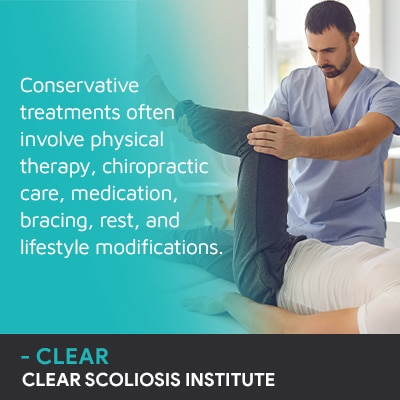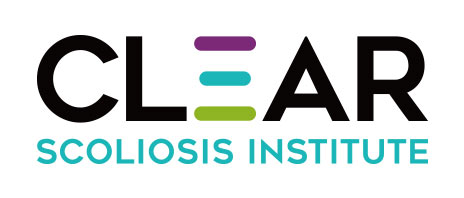
A person's overall health can be affected by their spinal health, and a healthy spine will have its natural curves in place and healthy discs sitting between adjacent vertebral bodies. If a disc experiences degenerative changes, it can disrupt the biomechanics of the entire spine.
Disc health is key to a healthy functioning spine. Discs have an inner nucleus and an outer annulus, and if the inner portion bulges outwards and pushes against the outer layer, the disc as a whole can bulge outwards, affecting its surroundings.
Bulging disc symptoms can vary, but the best remedy is determining the underlying cause of the bulging disc and addressing it accordingly.
The spine consists of vertebrae (bones) that form one long structure, and vertebrae are separated by an intervertebral disc.
The discs have two main structures: a soft inner nucleus and a strong outer annulus fibrosus. The inner nucleus pulposus is soft with a gel-like structure and is made up largely of fluid, collagen fibers, and proteoglycans.
The amount of fluid in the nucleus allows for the disc's shock-absorbing ability and affects the disc's ability to maintain its healthy shape and central position within the disc.
The outer annulus is made of layers of tough elastic collagen fibers that facilitate the disc's flexibility and strength.
Together, the disc's inner and outer structure work together to help the spine in a number of ways.
A healthy spine is one that functions optimally; it gives the body structure and allows for flexible movement and shock absorption.
The health of the discs that sit between adjacent vertebrae is a key factor that shapes overall spinal health, and spinal health is an important factor in shaping a patient's quality of life.
The importance of spinal discs is that they provide the spine with structural support as adjacent vertebrae attach to the disc that sits between them. The discs also work together to make the spine flexible and maintain a wide range of motion; they have to absorb and distribute mechanical stress exposed to the spine during movement, and they also act as cushions to prevent adjacent vertebrae being exposed to friction.
With those roles in mind, what would happen if a disc starts to degenerate?
The spine, like the rest of the body, is going to degenerate with age.
When it comes to the spine, it's most often the spinal discs that experience degenerative changes first.
Because of the many important functions of the discs, they are exposed to a lot of tension and strain, and feel the effects of poor posture and strenuous bending, lifting and twisting motions.
The discs are made up largely of water, but fluid levels decrease with age, and if a disc becomes desiccated, it can change shape, and this will affect the disc's surroundings within and around the spine.
Now if a disc's outer annulus starts to break down, this is often because age-related fluid loss and degenerative changes have weakened it and caused it to bulge outwards, and bulging discs take up space in and around the spine.
A bulging disc can also affect the position of vertebrae attached and cause nerve compression.
If a bulging disc is left untreated, disc herniation is at risk, and this occurs when a disc's inner nucleus pushes through a crack in its outer annulus, and this can cause more problems as the disc's shape-change is more severe.
Another factor to consider is that the spine's intervertebral discs don't have their own vascular supply, which is why disc damage can be difficult, if not impossible, to reverse; the sooner the cause of a bulging disc is determined, the sooner an appropriate treatment plan can be implemented and the better the chances are that improvements can be made.
The first step to addressing a bulging disc is determining its underlying cause.
A bulging disc is most commonly caused by spinal degeneration that can involve a number of age- and lifestyle-related factors.
So changes to the fluid levels and cracks in the outer annulus caused by degeneration can be a factor, as can trauma and injury.
Lifestyle factors include carrying excess weight, low activity levels, repeatedly lifting heavy objects incorrectly, and chronic poor posture that can have the cumulative effect of increasing a person's level and rate of age-related degenerative changes.
Genetics can also be a factor causing some people to be predisposed to developing disc issues.
To summarize, bulging disc issues are often caused by a combination of factors that can include age-related spinal degeneration, trauma/injury, lifestyle and genetic factors.
Once the cause is determined, treatment can be designed.
When the spine develops an issue/condition, there are different ways to respond, and treatment can often be divided into two main responses: surgical treatment or non-surgical treatment.
All surgical procedures come with their share of risks, but spinal surgery can come with some potentially serious risks, side effects, and complications; this reflects the important roles and functions of the spine, including working with the brain to form the body's central nervous system (CNS).
The goal of bulging disc treatment is to preserve function and prevent further damage, and most often, conservative treatments are the first resort.
Conservative treatments are non-surgical and less invasive and when effective are better for the spine's long-term health.

Physical therapy can help improve posture, activity levels, a patient's weight, and when it focuses on increasing the spine's surrounding muscle strength, can take pressure off an affected disc and its immediate surroundings.
Physical therapy can also help restore disc health by increasing circulation around an affected disc; with no vascular supply, this is the best way to make much-needed nutrients available to the discs as nutrients needed for repair can be absorbed by the disc.
Chiropractic care can help address any structural issues within the spine that can be contributing to disc degeneration such as an unnatural spinal curve or vertebral subluxation.
More invasive forms of treatment include an epidural steroid injection and/or surgical treatment.
Important factors that shape a patient's treatment needs include severity, location of the bulging disc, and experienced symptoms.
A bulging disc can cause a number of symptoms, and depending on how severe the disc's changes are and where the disc is located within the spine, symptoms tend to be experienced primarily around the damaged disc.
Bulging discs can develop anywhere in the spine: the cervical spine (neck) the thoracic spine (middle/upper back), and the lumbar spine (lower back).
The area of the spine with the damaged disc, and its immediate surroundings, are going to experience the most direct effects.
For example, if a disc is bulging in the lumbar spine, it can interrupt the lumbar spine's ability to maintain its function: support the width of the torso, the spinal sections above, and its vertebral bodies feel the strain from bending, lifting, and twisting motions.

When it comes to bulging discs, the goal is to prevent them from becoming herniated discs; a bulging disc becomes a herniated disc when its inner nucleus pushes through a tear in the outer annulus, and now, the disc's inner material is leaking out into and around the spine where that space for other structures and nerves is needed.
A bulging disc can be prevented by leading a spine-friendly lifestyle, and this includes maintaining a healthy weight, activity level, diet, and practicing proper posture and understanding the ergonomics of heavy lifting.
Preserving disc health means having good circulation so important nutrients and oxygen needed for repair can be absorbed by the discs from their surroundings.
When the underlying cause of a bulging disc is determined, a physical therapist can design exercises specifically for increasing circulation around the affected disc, along with muscle strengthening in the area; strong surrounding muscles takes pressure off the spine and disc.
If an unnatural spinal curve or misaligned vertebrae are the cause of a bulging disc, the spine's healthy curves and alignment have to be restored to remove pressure from the disc.
Here at the CLEAR Scoliosis Institute, bulging disc treatment is proactive and conservative and has the goal of preserving/improving disc function to prevent disc herniation and further damage.

CLEAR provides a unique and innovative way of understanding scoliosis. Sign up to receive facts and information you won’t find anywhere else.
